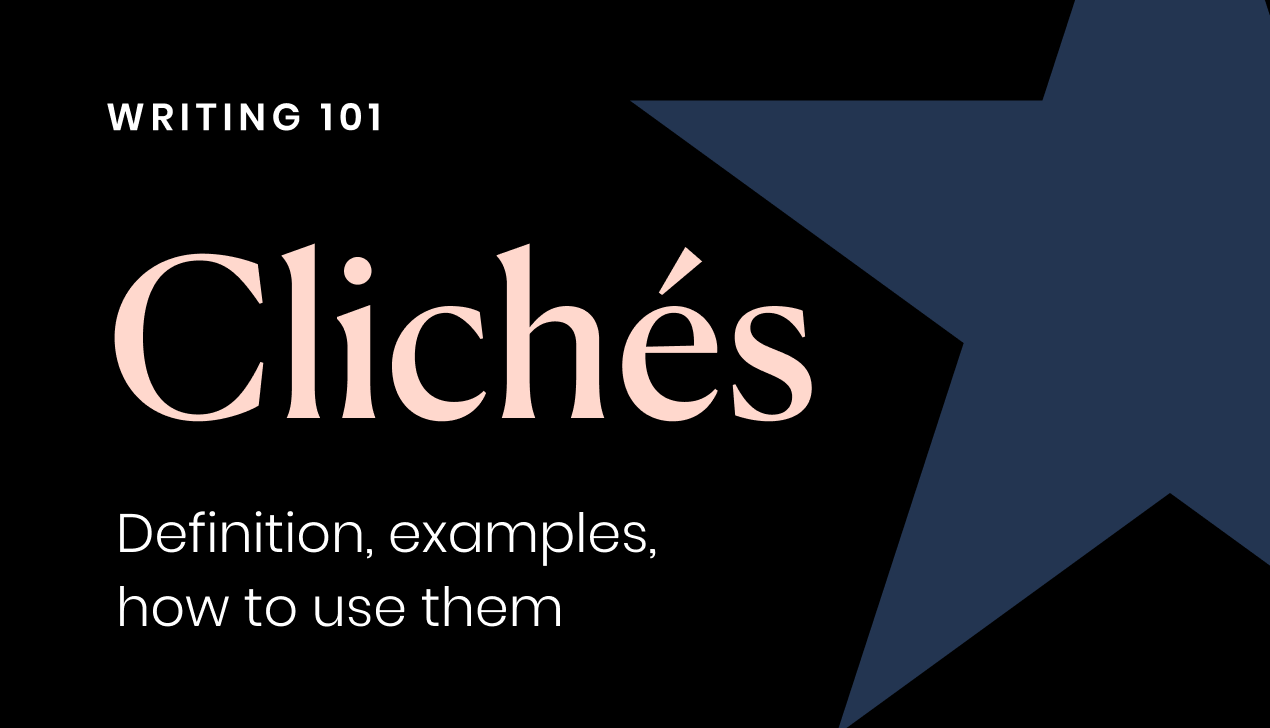Words at work
– 4 min read
A guide to apostrophe rules
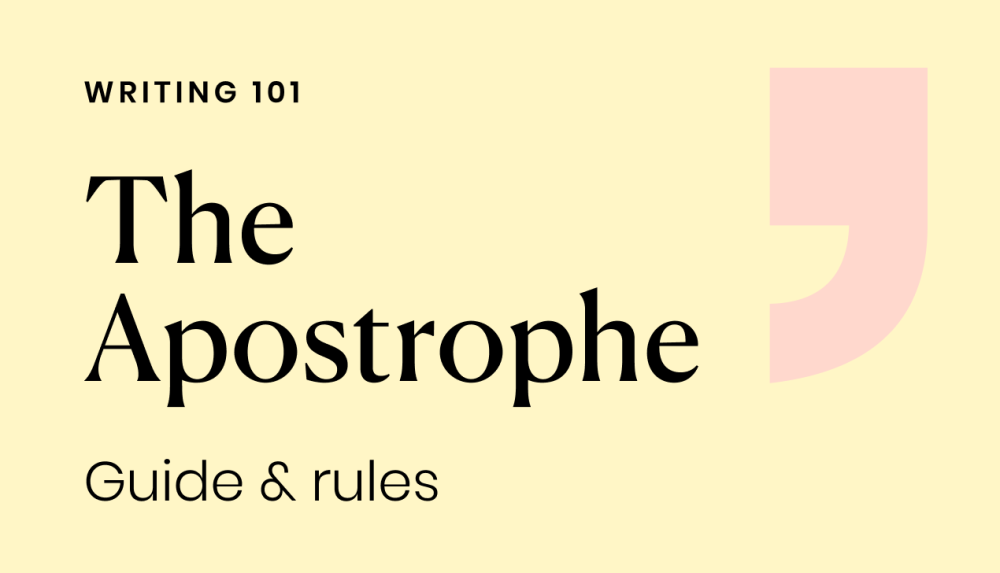
Sometimes, grammar can be confusing. Case in point: figuring out how and when to use an apostrophe.
Apostrophes can signal possessives or contractions. With these two very different use cases, it’s easy to see all of the common mistakes that both adults and children make in using them. That’s why we’ve made this guide as a quick reference to help you out.
In this guide, we explain when you should use an apostrophe, the different types of apostrophes, and how to use them correctly.
When should you use an apostrophe?
An apostrophe is typically used to show possession or to form a contraction. Apostrophes can be used to form plurals and can also be used as part of a holiday or date — for instance, April Fools’ Day or the ’70s. Many rules go with apostrophe use and multiple ways that they can be used.
Here are some of the most common instances when you should use an apostrophe.
What are the different types of apostrophes?
The use of apostrophes can be grouped into three different types:
- Apostrophes used to show the omission of letters or numbers
In contractions where one or more letters or numbers are taken out, an apostrophe can be inserted. For example, “she couldn’t go outside.” - Apostrophes used to indicate possession
Apostrophes can be used to show possession, such as joint possession. They can be used with possessive nouns. For example, “the student’s book.” - Apostrophes used to form plurals (numbers, abbreviations, and symbols)
Apostrophes aren’t typically used to create a plural. However, there are exceptions for forming plurals of numbers, abbreviations, and symbols. For instance, “there are two 7’s in her number.”
When to not use an apostrophe
Keep in mind that just as there are rules for instances to use apostrophes, there are also instances where you should not use an apostrophe.
For example, you shouldn’t use an apostrophe for possessive pronouns.
The following possessive pronouns should not include an apostrophe: her, his, its, my, ours, and yours. Its can be a tricky one to remember if it needs an apostrophe or not. It’s with an apostrophe indicates a contraction — combining the words “it” and “is”. However, used as a possessive pronoun, its doesn’t need an apostrophe. For example, “The bike was in its place in the garage.”
Examples of using the apostrophe
As mentioned above, apostrophes follow certain rules. Here are the rules for apostrophes and some examples of the correct and incorrect uses of an apostrophe for each.
RULE 1: Use an apostrophe for contractions. The apostrophe in a contraction is placed where letters have been removed from the word. Contractions can make your writing sound more conversational.
Example 1
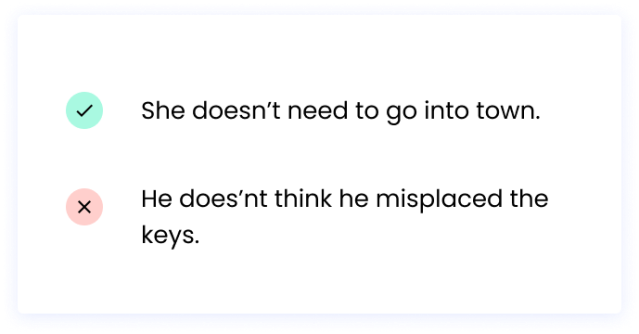
Example 2
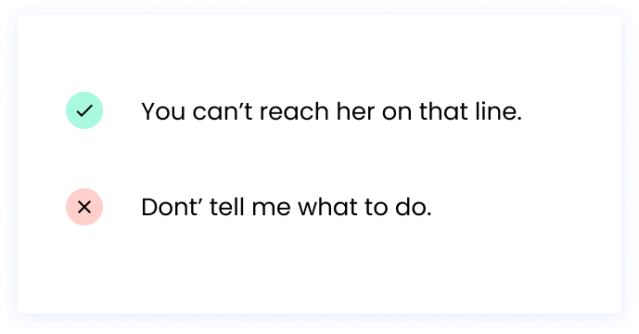
Note that contractions should not be used in formal writing. Spell out the words instead of omitting letters and adding an apostrophe. In this next example, though the apostrophe is in the correct place, the writing is a formal piece and should not use contractions.
Example 3
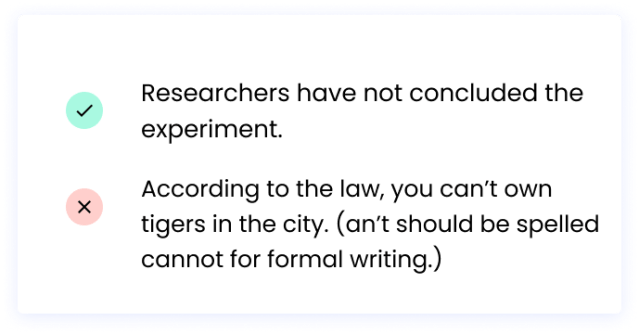
RULE 2: Use an apostrophe to indicate possession.
For a singular noun, simply add the apostrophe before the letter s.
Example 4
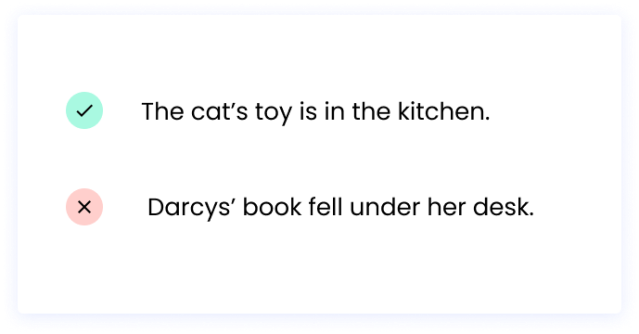
If a noun ends in an s already, then the typical practice for common nouns is to place the apostrophe after the s and another s at the end. However, proper nouns do not include an extra s after the apostrophe.
Example 5
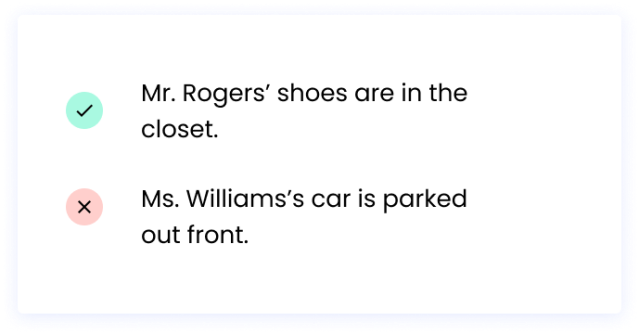
Example 6
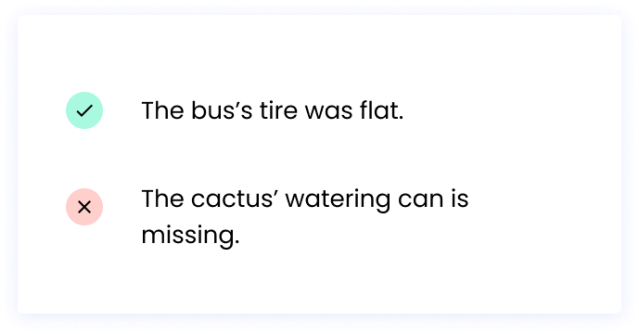
When you need to show possession of plurals that don’t end in s, you would simply add an apostrophe and an s following the apostrophe. Here’s how.
Example 7
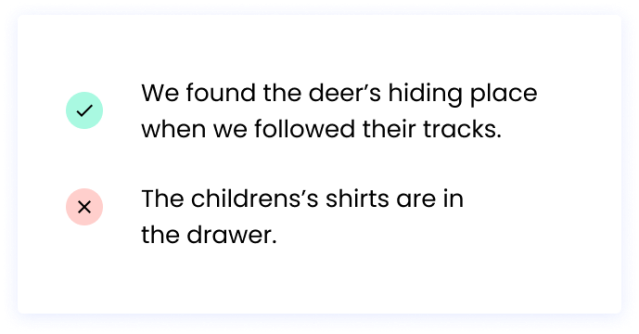
However, when you have a plural that ends in an s, you don’t add an s after the apostrophe.
Example 8
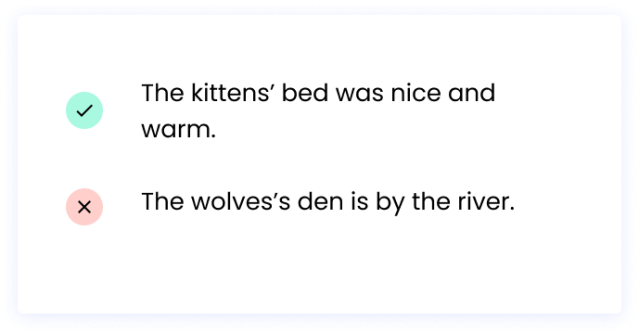
Example 9

When something belongs to more than one person, you should only add the apostrophe to the final name, no matter how many names are listed.
Example 10

If there are separate objects involved that belong to different people in the list, then you can add an apostrophe for each.
Example 11

RULE 3: Use an apostrophe to form specific plurals such as numbers, abbreviations, and symbols.
For double-digit numbers, the apostrophe isn’t necessary. For single digits, both with or without an apostrophe are accepted.
Example 12
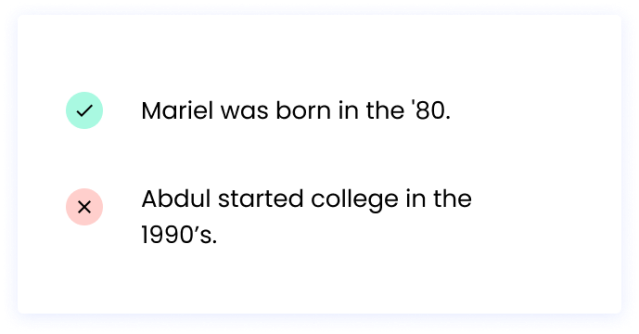
Example 13
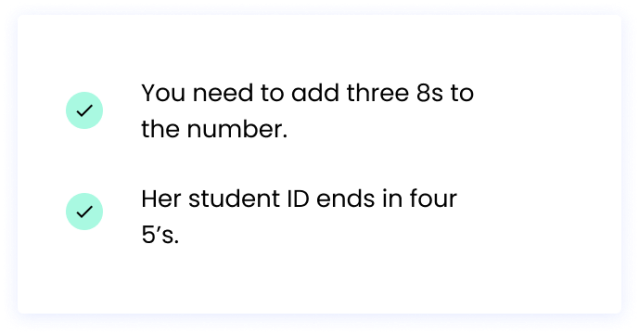
The best way to improve your grammar skills is to practice, and to use Writer for helpful suggestions. Start a free trial today. Keep writing, and you’ll start to get the hang of when to use apostrophes and when to leave them out.




